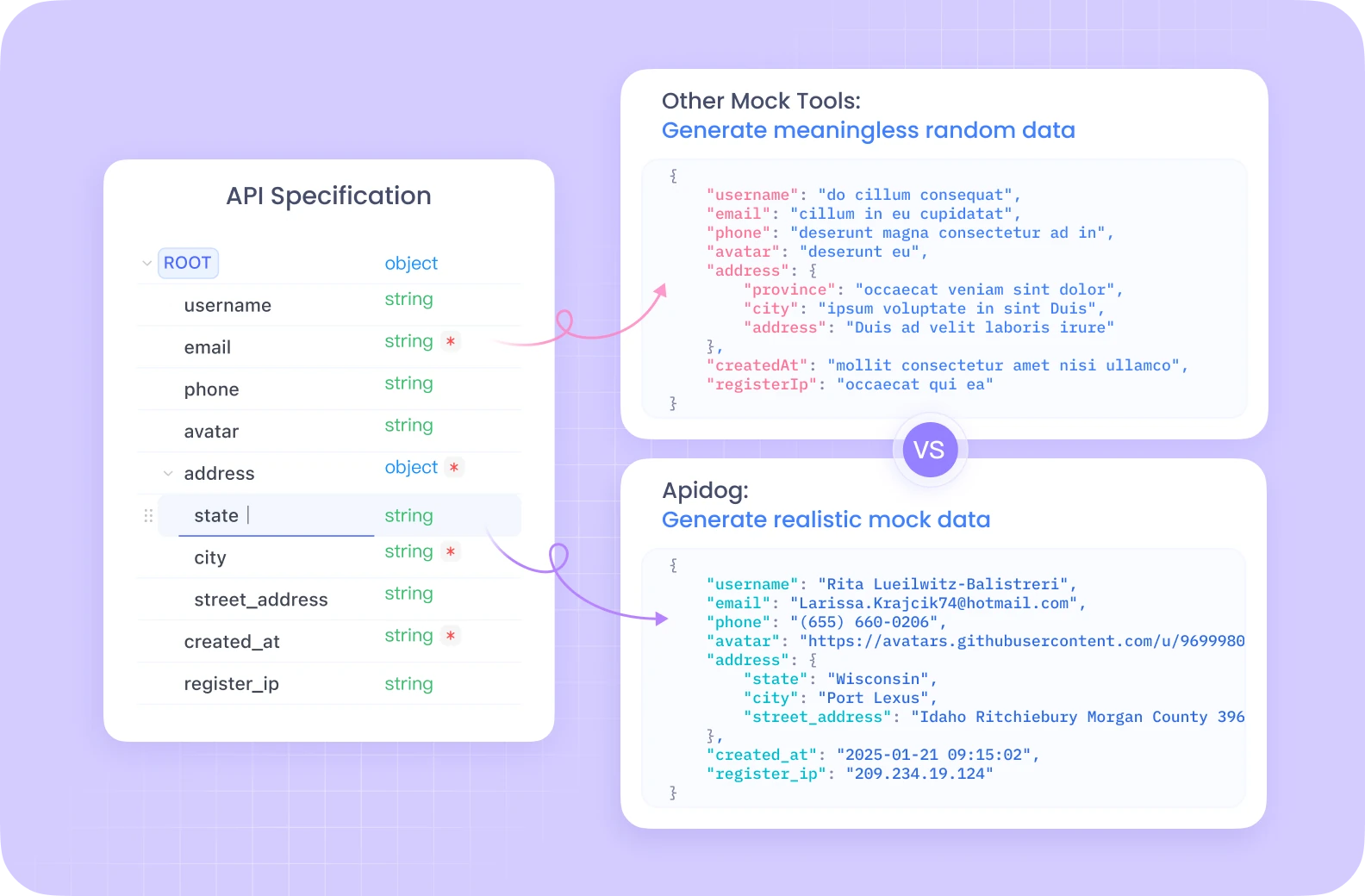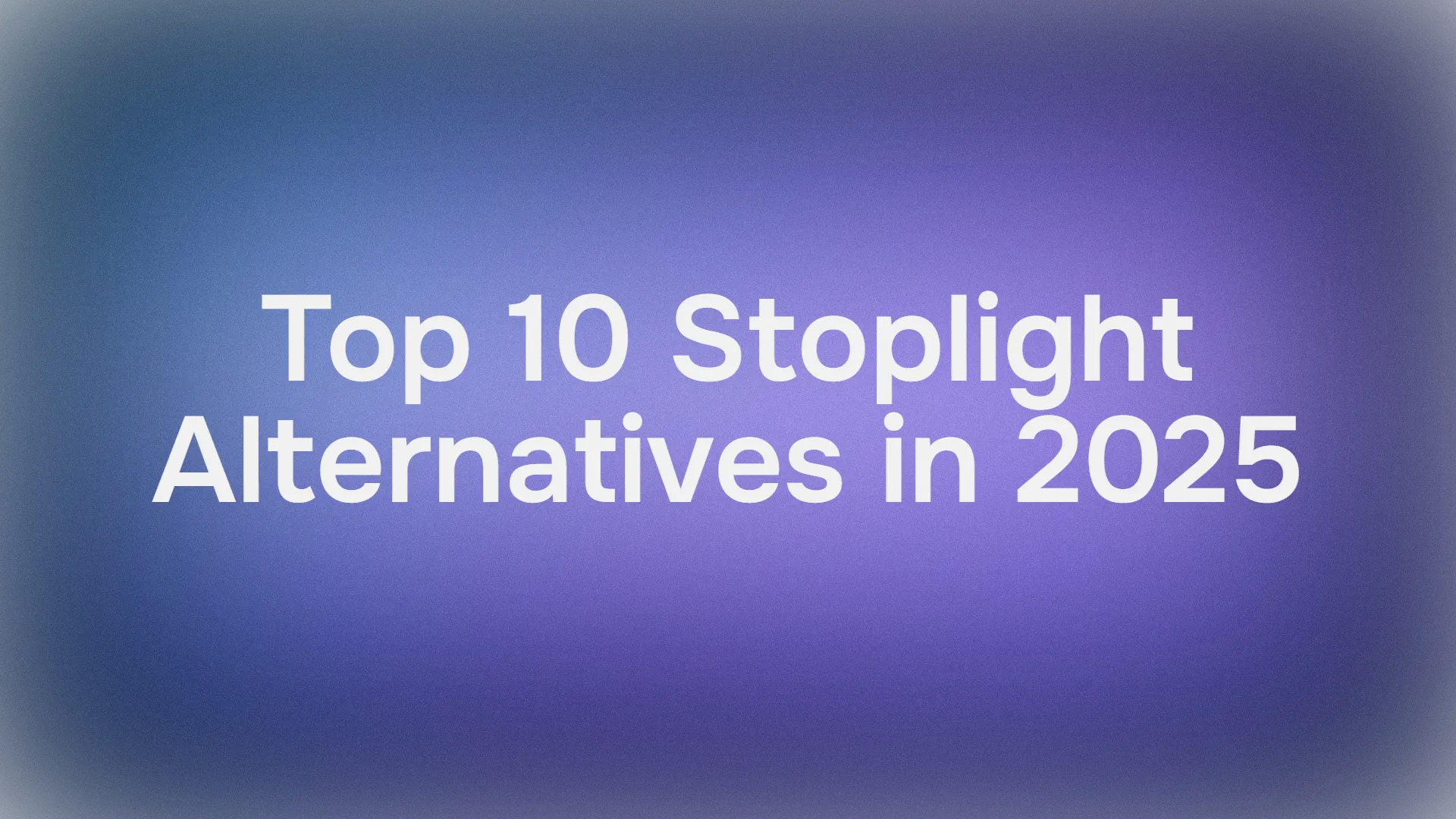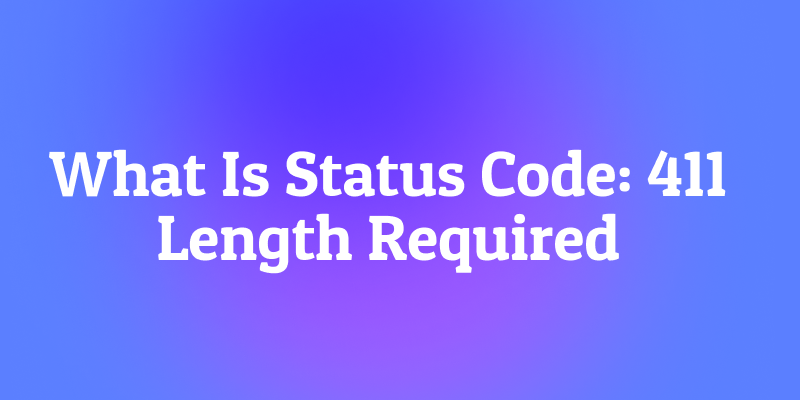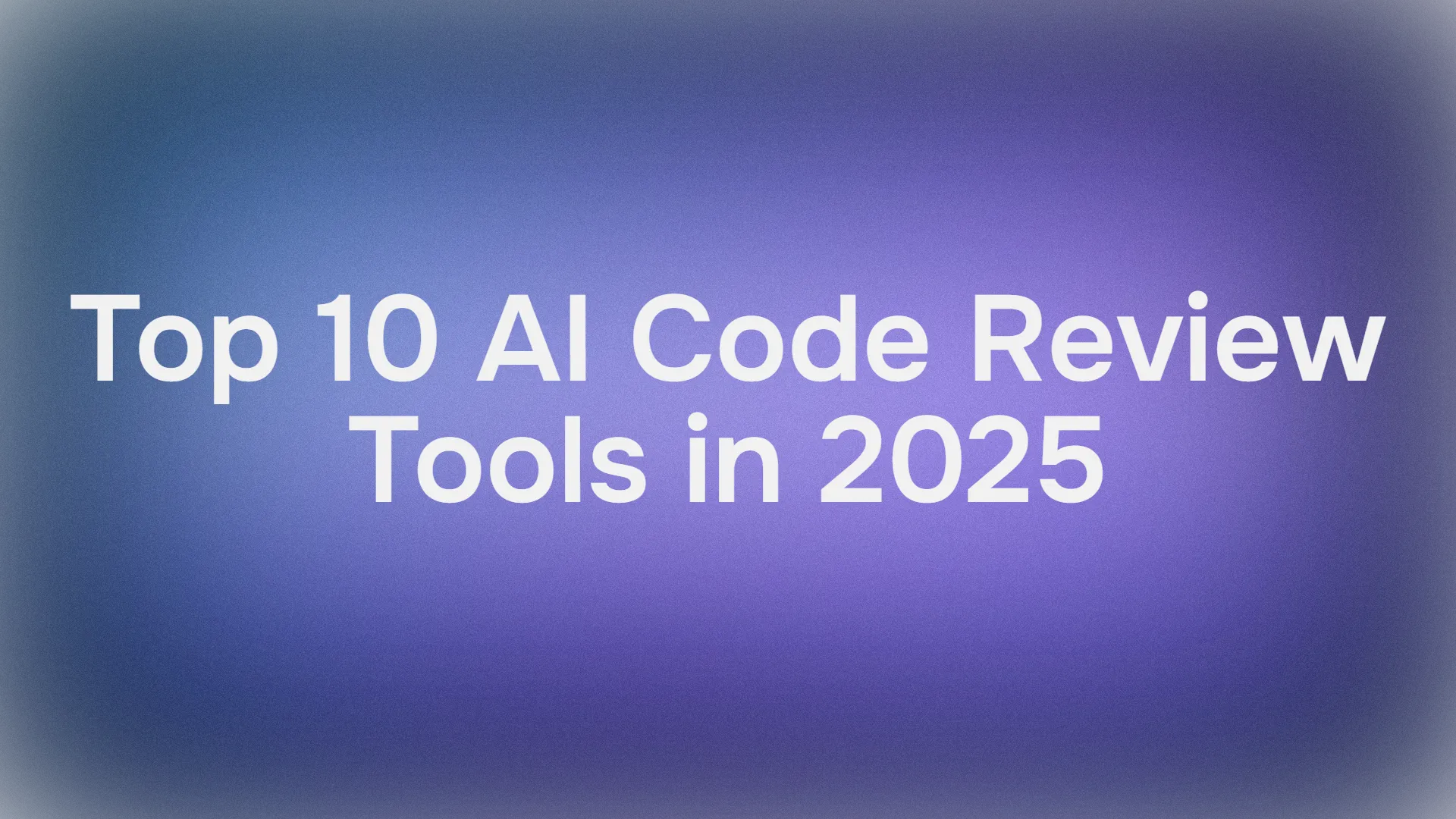If you've relied on Stoplight for API design, documentation, and collaboration, you might be evaluating options in a dynamic API landscape where integration and expansion are key. As clarified by SmartBear's API Evangelist Yousef Nabi in response to community discussions, Stoplight remains fully supported and managed as its own offering, with customers able to continue buying, expanding, and using it seamlessly. However, SmartBear has integrated many of Stoplight's best capabilities—like API form-based design, mocking, documentation, and governance—into their broader API Hub/Swagger products, creating a more connected end-to-end lifecycle experience while preserving user choice. This evolution encourages developers to explore stoplight alternatives that complement or extend their workflows. In this guide to the Top 10 Stoplight Alternatives in 2025, we'll examine tools that address opportunities like enhanced integrations, cost optimization, and specialized features. Whether you're building RESTful services or GraphQL endpoints, these stoplight alternatives offer robust paths forward. Let's explore what each brings to the table, starting with our top recommendation.
Want an integrated, All-in-One platform for your Developer Team to work together with maximum productivity?
Apidog delivers all your demands, and replaces Postman at a much more affordable price!
Why Consider Stoplight Alternatives in 2025?
Even as Stoplight continues to operate as part of SmartBear's broader API strategy—with ongoing maintenance and thoughtful investments—developers often seek stoplight alternatives to gain flexibility, explore seamless upgrade paths to integrated platforms, or tailor tools to specific needs. This isn't about disruption but about empowerment: Users can keep leveraging Stoplight today while experimenting with options that evolve alongside their projects, such as deeper CI/CD ties or AI-assisted validation. The 2025 API tool ecosystem is thriving with stoplight alternatives that emphasize affordability, scalability, and community-driven innovation. From all-in-one platforms to specialized doc generators, these tools enhance collaboration and testing without requiring a full pivot. Our Top 10 Stoplight Alternatives in 2025 selection draws from recent industry insights, focusing on ease of use, feature parity, and long-term viability. You'll find options for solo devs and enterprise squads alike, ensuring your APIs remain well-documented and developer-friendly

1. Apidog: The Comprehensive Successor to Stoplight
Leading our list of Top 10 Stoplight Alternatives in 2025 is Apidog, a versatile API platform that stands out as the superior choice for teams seeking an all-encompassing solution. Apidog goes beyond basic documentation by integrating design, testing, mocking, and debugging into a single, intuitive interface—addressing the very gaps Stoplight's shutdown exposes. Its visual API builder lets you prototype endpoints with drag-and-drop ease, while automated testing suites catch regressions early, much like Stoplight's spectral linting but with AI-powered assertions for smarter validation.
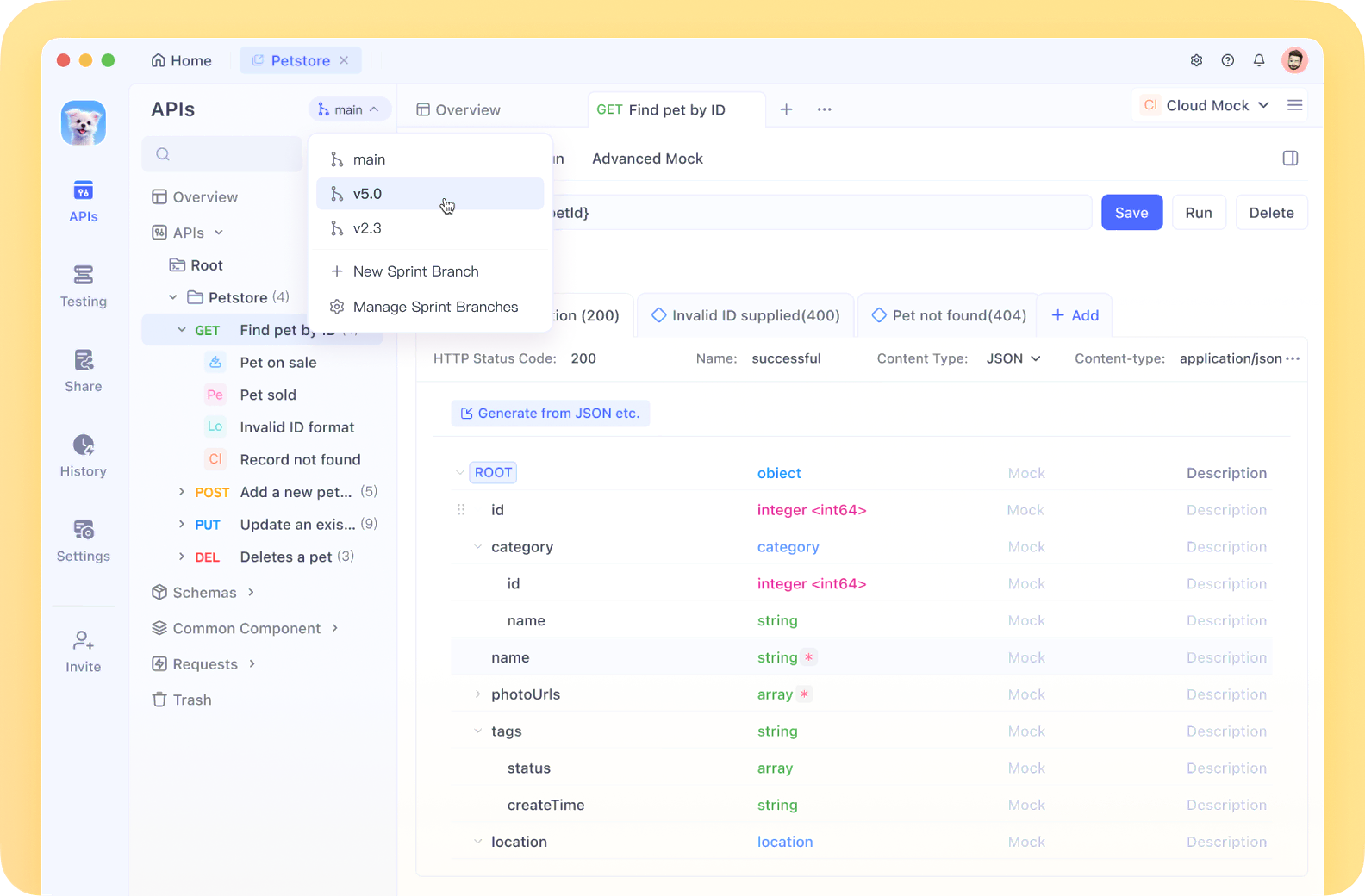
What sets Apidog apart among stoplight alternatives is its commitment to collaboration without the bloat. Real-time editing, version control via Git, and customizable themes ensure your docs stay alive and interactive, complete with code samples in multiple languages. Use cases abound: For startups, it's ideal for rapid MVP development, where you can generate OpenAPI specs from code and share interactive consoles with stakeholders. Enterprises appreciate its enterprise-grade security, like role-based access and compliance with SOC 2. Pricing starts free for individuals, scaling affordably to teams— a stark contrast to Stoplight's creeping costs. In short, if you're migrating from Stoplight, Apidog isn't just an alternative; it's an upgrade that streamlines your entire API lifecycle.
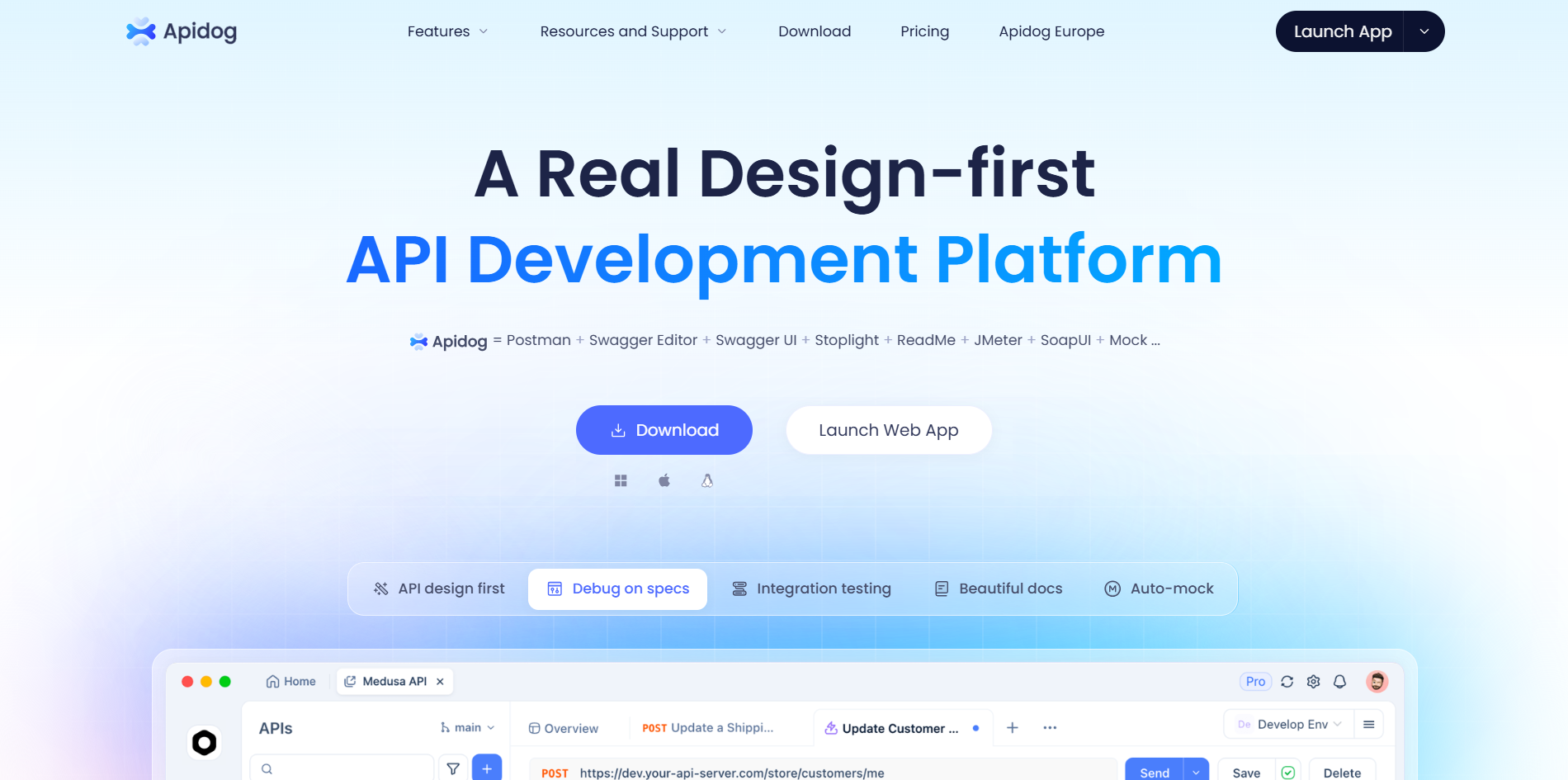
2. Postman: The Testing Powerhouse
Postman remains a staple among stoplight alternatives, evolving in 2025 into a full-fledged API development hub. Known for its request-building prowess, Postman now excels in collaborative documentation with shared workspaces and auto-generated collections from OpenAPI files. Its Newman CLI tool enables CI/CD integration, making it perfect for automated testing pipelines.
Advantages include extensive plugin support and a vast library of pre-built requests, which save hours on common integrations like Stripe or AWS. For use cases, consider frontend teams using Postman to mock APIs during development or QA groups running load tests. While it lacks Stoplight's deep design focus, its monitoring features—alerting on endpoint failures—make it indispensable for production oversight. Free for basics, with pro tiers for advanced syncing.

3. Redoc/Redocly: Elegant OpenAPI Rendering
Redoc and its enterprise arm Redocly offer stunning, customizable docs from OpenAPI specs, positioning them firmly in our Top 10 Stoplight Alternatives in 2025. Redoc's single-page renderer delivers a three-panel layout that's both readable and interactive, with search and schema expansion for quick navigation.
Key advantages: Lightning-fast loading via static generation and theme customization without coding. Redocly adds linting, bundling, and CI checks, echoing Stoplight's validation tools. Use it for public developer portals where aesthetics matter—think fintech APIs needing clear authentication flows. Open-source core keeps costs low, with paid hosting for teams.

4. Document360: Knowledge Base Mastery
Document360 shines as a stoplight alternative for structured API knowledge bases, blending docs with search analytics in 2025. It supports Markdown, OpenAPI imports, and AI-assisted content generation, creating searchable portals that scale with your API ecosystem.
Advantages include analytics on user engagement—spotting underused endpoints—and multilingual support for global teams. Ideal for SaaS companies building customer-facing guides, where embedding code snippets and videos enhances self-service. Pricing is tiered, starting at $199/month for pro features.

5. ReadMe: Interactive Developer Hubs
ReadMe crafts engaging, story-driven docs that feel less like manuals and more like tutorials, a fresh take among stoplight alternatives. In 2025, its changelog integration and feedback loops make APIs feel dynamic, with embeddable widgets for in-app guidance.
Standout advantages: A/B testing for doc variants and SDK generation from specs. Use cases include e-commerce platforms where devs need quick onboarding for payment gateways. Free for open-source, with paid plans from $500/month.

6. Slate: Minimalist Markdown Magic
Slate keeps it simple with Markdown-based docs that render beautifully as static sites, a lightweight entry in our Top 10 Stoplight Alternatives in 2025. Its responsive design and syntax-highlighted examples make complex schemas approachable.
Advantages: Git-based versioning and no vendor lock-in, perfect for open-source projects. For indie devs documenting microservices, Slate's ease shines—deploy to GitHub Pages in minutes. Completely free and self-hosted.
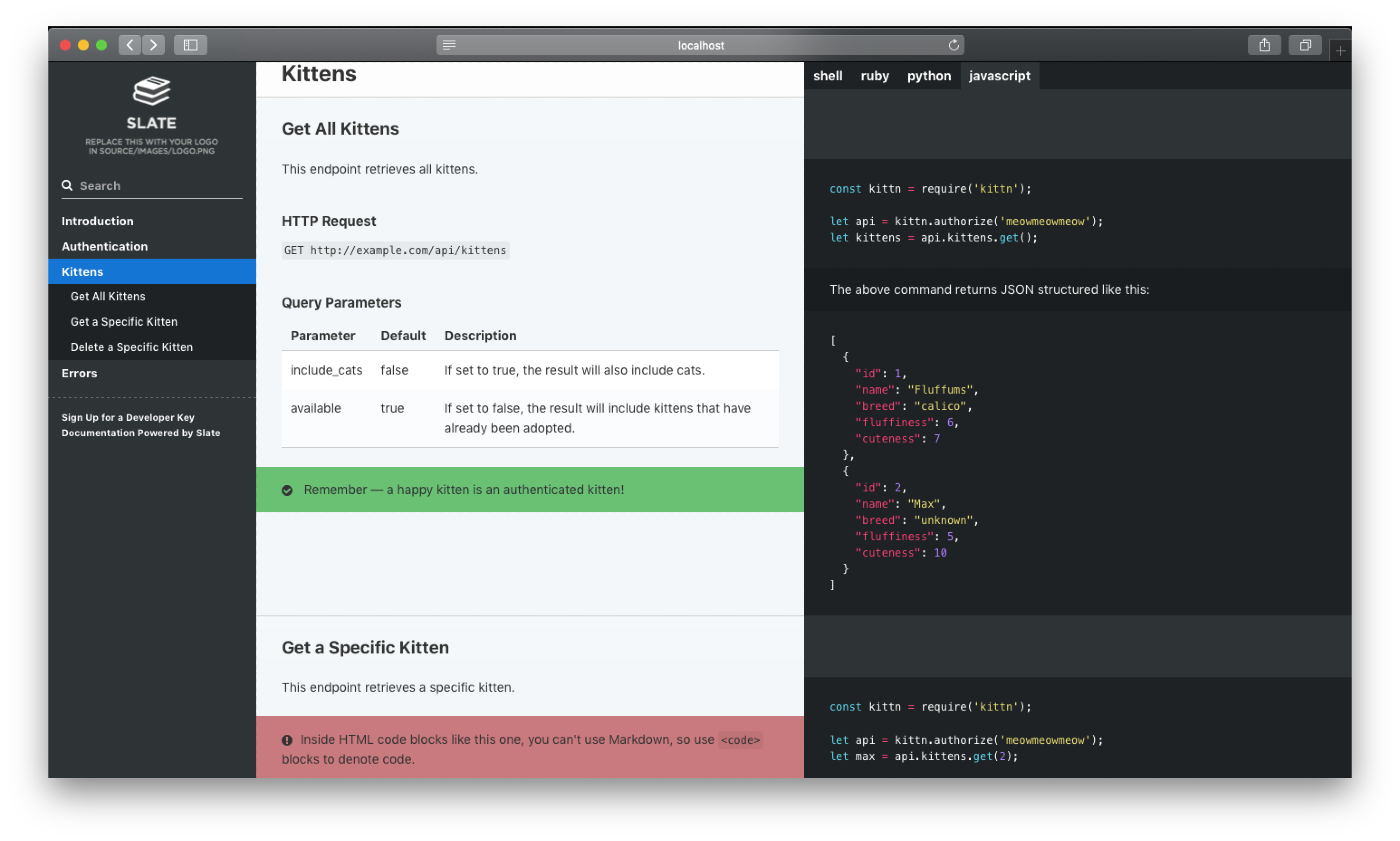
7. Mintlify: Modern Doc Sites with Ease
Mintlify automates beautiful docs from code comments, emerging as a sleek stoplight alternative in 2025. It scans your repo for JSDoc or similar, generating interactive sites with search and dark mode.
Advantages: Zero-config setup and analytics on doc views. Suited for JavaScript-heavy teams building libraries, where auto-updates keep docs fresh. Starts free, with pro hosting at $29/month.

8. SwaggerHub/Swagger: The OpenAPI Standard Bearer
SwaggerHub, built on the Swagger ecosystem, provides a cloud-based editor and registry for OpenAPI specs, a direct evolution from Stoplight's roots. In 2025, it emphasizes governance with domain-driven design tools.
Advantages: Mock servers and codegen for 50+ languages. For enterprise compliance, its audit trails are invaluable. Free for public projects, enterprise from $75/user/month.

9. OpenAPI Generator: Code-First Automation
OpenAPI Generator turns specs into client/server stubs across languages, a programmatic stoplight alternative for 2025 workflows. It's CLI-driven, integrating seamlessly with build tools.
Advantages: Vast template ecosystem and no runtime dependencies. Use it in monorepos for generating SDKs from a single spec. Fully open-source and free.
10. Scalar: The Developer-First Revival
Rounding out our Top 10 Stoplight Alternatives in 2025 is Scalar, recommended by Phil Sturgeon, former Product Manager at Stoplight who shaped many of its beloved features. Scalar upholds Stoplight's promise with MIT-licensed open-source core, living documentation, and transparent pricing—no hidden fees for consumers. It renders OpenAPI (and soon AsyncAPI/GraphQL) 10x faster, with universal theming.
Advantages: Automatic updates from Git and white-glove migrations, including three free months for Stoplight users. Ideal for teams valuing speed and openness, like those building async event systems. Starts at competitive rates with locked pricing.

Other Tools Worth Mentioning
Beyond the top picks, a few more stoplight alternatives deserve a nod.
- GitBook offers collaborative Markdown editing with embeds and analytics, great for hybrid API/product docs at $8.99/user/month.
- Docusaurus, Facebook's static site generator, excels in React-based API refs with search and versioning—free for open-source.
- Apiary provides mock servers and design-first collaboration, now under Oracle, suited for enterprise prototyping at custom pricing. Each fills niche needs, from static hosting to advanced mocking.
Moving Forward: Choosing Your Next API Companion
As we wrap up this look at the Top 10 Stoplight Alternatives in 2025, remember that the shift from Stoplight opens doors to tools that better align with your evolving needs. Apidog emerges as the standout for its holistic approach, but whether you lean toward Postman's testing depth or Scalar's ethical open-source vibe, the key is selecting a tool based on your workflow. With migrations easier than ever, now's the time to test a few—many offer free tiers to ease the transition. Your APIs deserve documentation that's as dynamic as your code.
